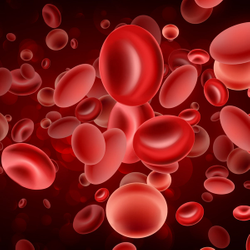An observational study reported that results with elranatamab for patients with RRMM from the MagnetisMM-3 trial were superior to what was observed across 5 centers in the UK.
Elranatamab-bcmm (Elrexfio) prolonged progression-free survival (PFS) compared with other routine treatments available for patients with triple class-exposed relapsed/refractory multiple myeloma in the real world, according to results from a retrospective, observational study published in BMC Cancer.
This study included 2 groups of patients: 1, the trial cohort, those from cohort A of the single arm, multicenter, phase 2 MagnetisMM-3 trial (NCT04649359), including patients who were naïve to BCMA targeted therapy; and 2, the control cohort, patients with relapsed/refractory multiple myeloma who were treated across 5 UK centers.
In the control cohort, the median PFS was 3.71 months (95% CI, 2.73-4.73), and the median overall survival (OS) was 11.00 months (95% CI, 8.02-18.10). In the trial cohort, the median PFS was not reached (NR; 95% CI, 95% CI, 10.11-NR), and the median OS was NR (95% CI, 13.85-NR).
In unweighted analyses, significant PFS improvements were observed (HR, 0.48; 95% CI, 0.33-0.70), highlighting the differences in restricted mean survival time of 6.95 months (95% CI, 4.08-9.61); the authors noted that the HR results should be “treated with caution” because the proportional hazards null hypothesis was rejected (P = .002). Significant OS improvements were also observed with elranatamab (HR, 0.66; 95% CI, 0.45-0.96), with a difference in restricted mean survival time of 3.01 months (95% CI, 0.32-5.70); with the proportional hazard assumption upheld (P = .32).
Weighted analyses showed a PFS improvement with elranatamab (HR, 0.52; 95% CI, 0.35-0.80), with a difference in restricted mean survival time of 6.45 months (95% CI, 3.05-9.45). The weighted results for OS were not statistically significant (HR, 0.75; 95% CI, 0.46-1.26), with a difference in restricted mean survival time of 2.02 months (95% CI, –1.43 to 5.27). The proportional hazards were violated for PFS (P = .003), but not OS (P = .34).
In sensitivity analyses where a propensity score model was applied, the results were congruent with findings from the weighted analyses.
“By using [electronic health records] from multiple [national health service] centers that reflect recent clinical practice and overlap with the MagnetisMM-3 study period, we demonstrated that elranatamab has a strong PFS benefit over existing treatments for [relapsed/refractory multiple myeloma] in the UK,” the study authors wrote in the paper. “The integration of new therapeutic options, alongside holistic clinical management incorporating clinical, nutritional, and mental health care, is critical in the management of triple-class refractory [multiple myeloma].”
A total of 123 patients from the MagenetisMM-3 trial and 81 patients from the real-world setting were included in the study. Patient identification occurred between January 2015 and August 2023.
Patients from the real world were included if they had relapsed/refractory disease that met certain criteria, including receipt of at least 1 proteasome inhibitor, receipt of 1 immunomodulatory drug, receipt of at least 1 anti-CD38 monoclonal antibody, and documented disease progression within 60 days of the last dose. Further, all real-world patients had to meet the eligibility criteria for MagentisMM-3.
Eligibility criteria for MagnetisMM-3 included measurable disease, an ECOG performance status of 2 or less, and resolved acute effects of any prior therapy to baseline severity.2 Reasons for exclusion were smoldering multiple myeloma, active plasma cell leukemia, and any other active malignancy within 3 years prior to enrollment.
The primary trial end point was PFS. A real-world proxy of International Myeloma Working Group-defined PFS was applied in the real-world cohort. OS was defined as the time from the index date to the date of death.
References
- Tsang C, O’Reilly JE, Carpenter L, et al. Comparison of outcomes with elranatamab and real world treatments in the UK for triple class exposed relapsed and refractory multiple myeloma. BMC Cancer. 2025;25(1):1219. Published 2025 Jul 25. doi:10.1186/s12885-025-14624-9
- MagnetisMM-3: study of elranatamab (PF-06863135) monotherapy in participants with multiple myeloma who are refractory to at least one PI, one IMiD and one Anti-CD38 mAb. ClinicalTrials.gov. Updated January 27, 2025. Accessed August 21, 2025. https://tinyurl.com/ykyhjykr
